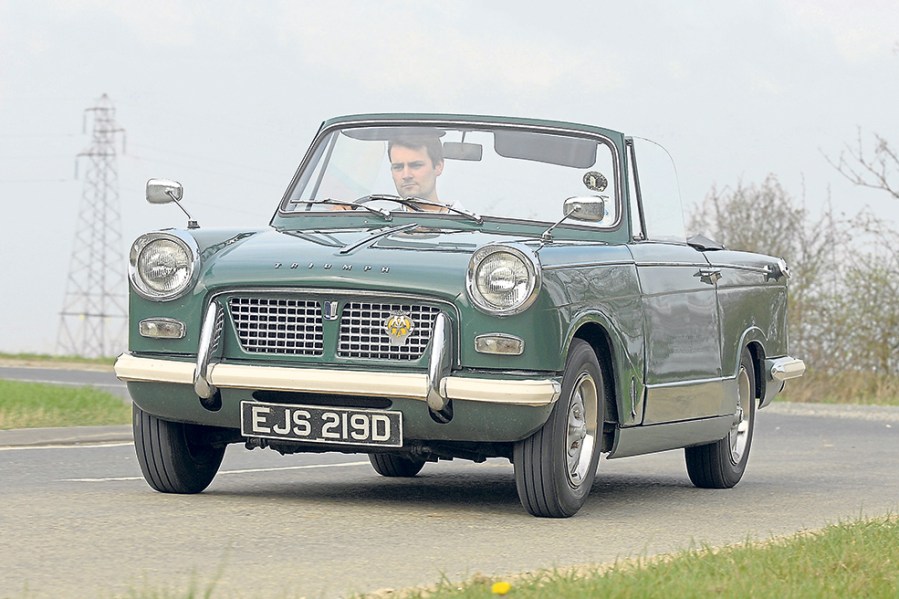If you like the idea of top-down motoring but want the family to come along too, a classic four-seater convertible is the answer. Here are some of our favorites
Words: Sam Skelton
British summer is a thing of joy. Freshly mown grass, chips by the beach, and those four days or so when you get the great yellow orb of the sun in the sky. It’s only natural that you want an open car to soak up the rays – but then you remember, you need four seats. And that rules out the little Triumph Spitfire of your dreams.
But you don’t need to abandon all hope of open motoring if you need room for four. With winter famously the best time to grab a convertible bargain ahead of summer, we’ve picked out some of our favourite four-seater convertibles to appeal to those of all budgets and tastes.
BMW 3 Series Convertible (E30)
BMW’s first 3 Series convertible wasn’t the first 3 Series convertible – coachbuilder Baur had been making compact convertibles from BMW bases since the 1502. The TC1, based on the E21 3 Series, retained window frames but had a cloth hood. The TC2 – based on the E30 – did the same. However, BMW’s own open-topped E30 was a proper convertible without window frames, and looked all the better for it. Following its 1985 launch, the market for Baur’s conversions was significantly reduced.
The in-house car had a multi-layered hood for improved insulation, and initially only came as a 325i allowing Bauer to continue to convert smaller-engined cars. Three years into production though, BMW introduced its own 318i and 320i versions. Bauer’s convertibles ceased in 1991 as the two-door E30 left production, but the factory car would continue to 1993. Today, bank on spending around £10,000 on a nice 320i or average 325i. Cars with alloys, leather and air conditioning will always sell best, and the very nicest 325is with all the toys can fetch up to £20,000. For real performance fun, seek out a rare M3 – but it will cost you.
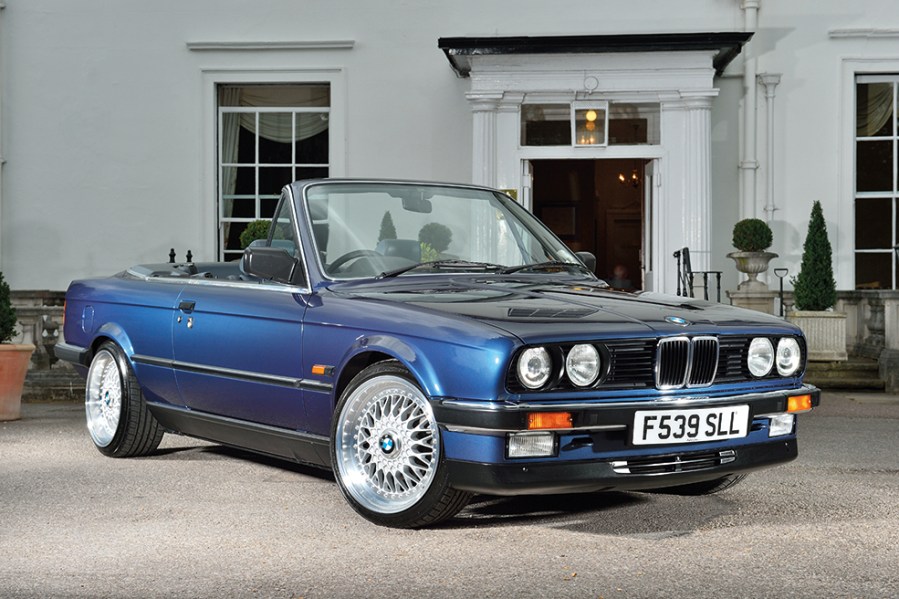
Mercedes-Benz A124
The last of three Bruno Sacco-designed Mercedes coupes, the two-door C124 became the basis of a factory convertible designated A124 in 1993, turning an already highly desirable luxury car into a boulevard cruiser. Despite a wheelbase 3.3 inches shorter than the volume saloon – and the challenges of packaging an electrically folding roof – legroom in the rear was surprisingly generous.
It was an expensive car when new, exceeding the already eyebrow-raising premium of the coupe. In 1996, an E220 convertible was around £40,000, and an E320 was over £50,000 – by this point near enough the price of an E36 AMG in coupe form.
It was inevitable then that used values would remain strong, and even in the dip following the 2007 financial crash, where saloon models could be picked up for very little indeed, the convertibles anchored at a high level. Today, you’ll need a high four-figure sum to secure the best – and much more for the most desirable six-cylinder cars.
With added refinements, more sound insulation than its lesser relations and a triple-skin hood lined more extravagantly than even the contemporary SL, the car can be considered as something of a modern interpretation of the older 220SE drop-tops.
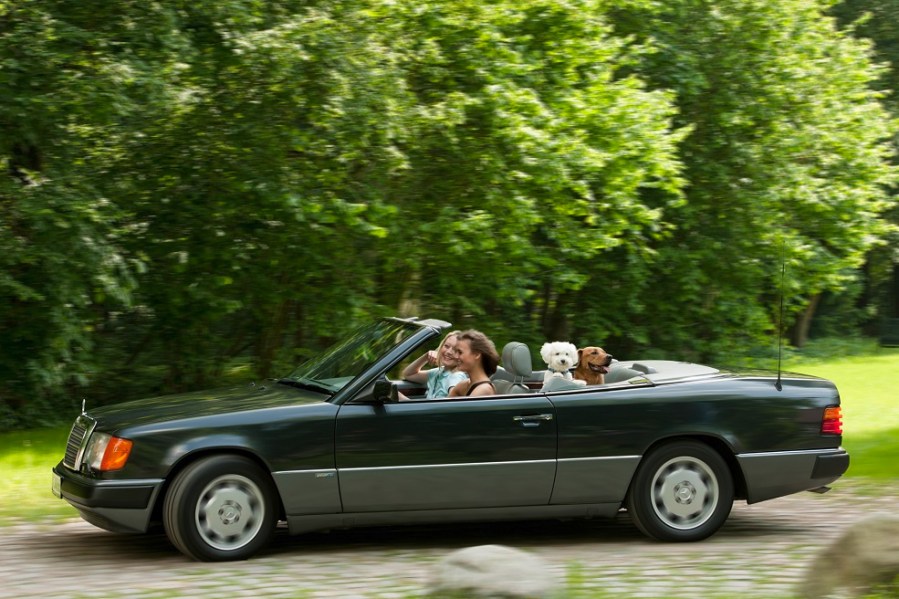
Jaguar XK8 Convertible
As far as svelte open-top cruisers go, Jaguar has a good track record. Notably, the convertible versions of the XK8 sold more than double the coupe’s numbers, and so today the market is full of them. In fact, both body styles are easy to find in the classifieds, but values are certainly edging their way up.
Later cars with the six-speed automatic gearboxes and 4.2 V8 engines are increasingly justifying premiums, as well as desirable equipment such as the rare sports suspension.
Looking at the alternatives to the XK8 convertible, those cars that can offer similar levels of comfort, style, and performance, the Jaguar still represents outstanding value. The rise of the XJS, Mercedes-Benz SL and the DB7 Volante are bound to have an effect.
While prices are on the up, the typical XK8 use-case – driven on Sundays, restored through the week – should ensure there are plenty of good examples around for some time to come.
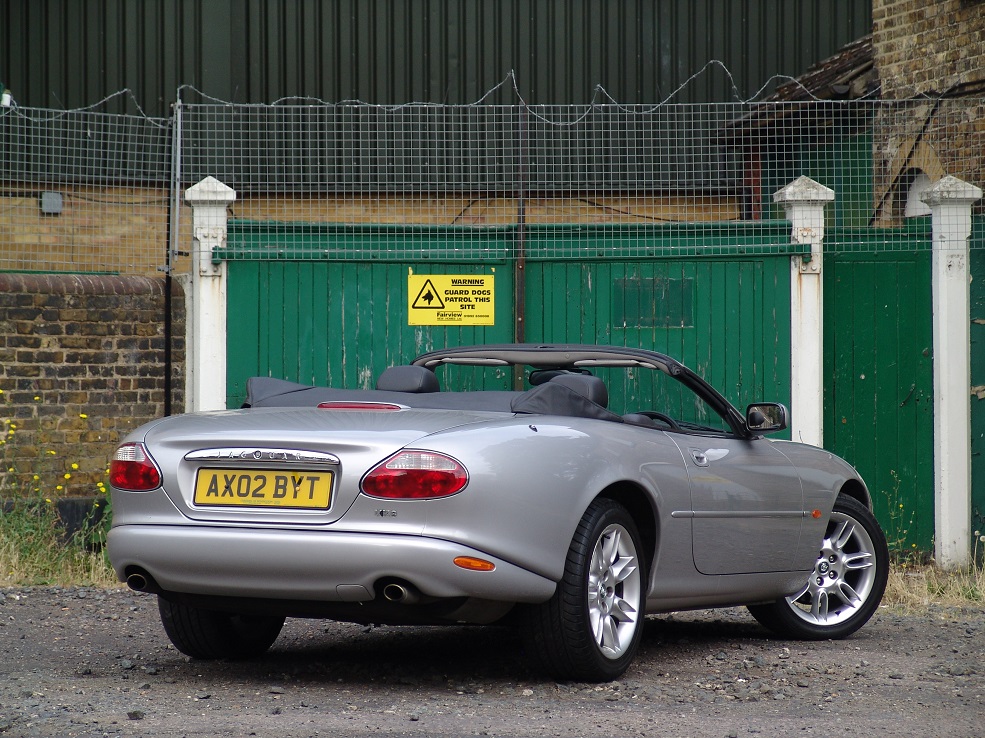
Volvo C70 Convertible
Criticised with little mercy for its scuttle shake and dynamic shortfalls, the Volvo C70 has spent its used-market years languishing in the lowly market territory of its depreciated 850 and S70/V70 relatives. But those seeking a comfortable family convertible won’t be as disappointed.
It’s certainly safe, adding roll-over protection bars behind the rear seats and a strengthened windscreen to the usual Volvo safety equipment, and it’s also remarkably comfortable thanks in large part to its cushy, ergonomic seats.
All this can be yours for pocket change today if you don’t mind a rolling project, and even the very best examples have difficulty asking devout Volvo enthusiasts for much.
There has lately been a craze within Volvo circles for the evocative Saffron paintwork available in the late 1990s, and so cars in this desirable shade – as well as with the impressive 4×100 watt Dynaudio Dolby Surround sound system – are snapped up most keenly.
With Volvo 480 values markedly up, it’s worth watching how gracefully this swoopy Volvo drop-top will age and appreciate.

Saab 900 Convertible
Another Swedish offering with a wide value range, the Saab 900 Convertible is an enigmatic choice that’s quite unlike anything else on the market.
Introduced in 1986, the car hit its stride through the 1990s until it was replaced in 1995 by an all-new, GM-derived model. Powered by a range of mainly turbocharged engines, the original 900 is a swift, if not particularly sporty, choice.
The very best examples in Aero trim and with the most powerful turbocharged engines can command serious money. A more realistic target is a well cared-for example with average miles (100,000 miles and up is the norm); examples in need of love can be had for low four-figure sums, especially if you don’t mind higher miles. Saab’s loyal following means that specialist support still exists, so parts sourcing should be fairly pain-free.
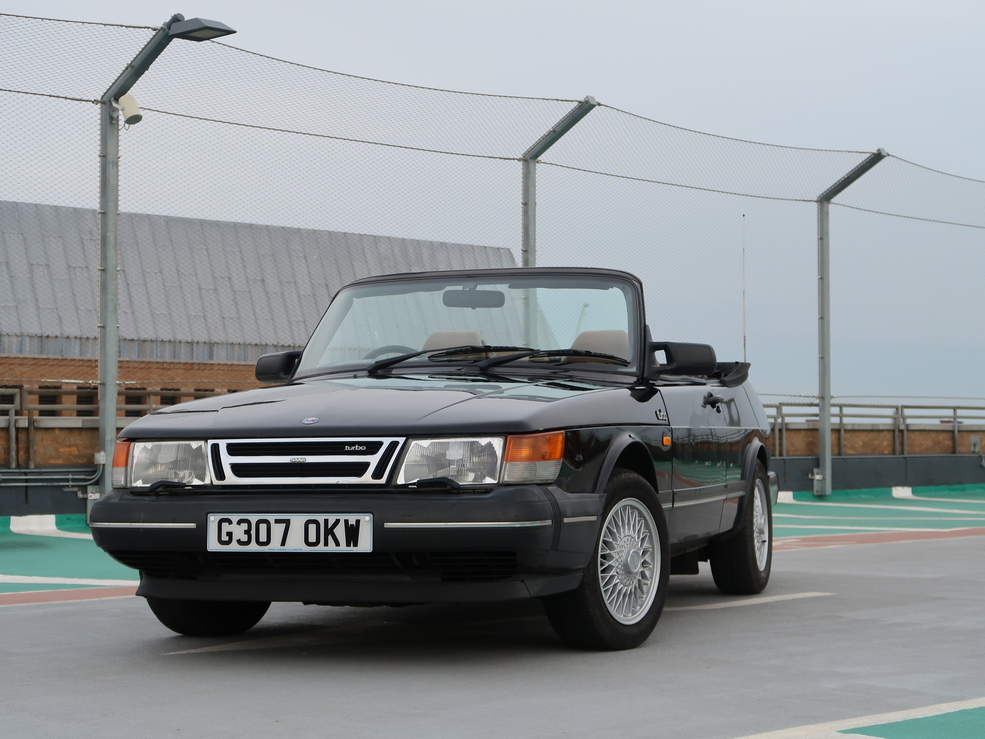
Peugeot 306 Cabriolet
Styled by Pininfarina, the Peugeot 306 Cabriolet is one of the prettiest open cars of the 1990s regardless of the number of seats. Peugeot was always good at chassis dynamics, so it should come as no surprise that the 306 Cabriolet handles almost as well as a sports car, offering thousands of 1990s customers the opportunity to have their cake and to eat it too. Most are of the 1.8-litre variety, though the 2-litre is worth seeking out. It offers extra performance without blunting the economy – which in eight valve form is surprisingly low for a car in its class. The later 16-valve cars are better on fuel, but not as collectible as the earliest pre-facelift examples. Yellow paint and red trim make cars collectible, as does the optional hardtop.
Best of all, the 306 Cabriolet is a bit of a bargain. The very nicest can fetch up to £5000, but £2000 is enough to get hold of a good one. If you’re less fussy about condition, they’re available for under £1000 – making them one of the cheapest four-seater classic convertibles on the market today.
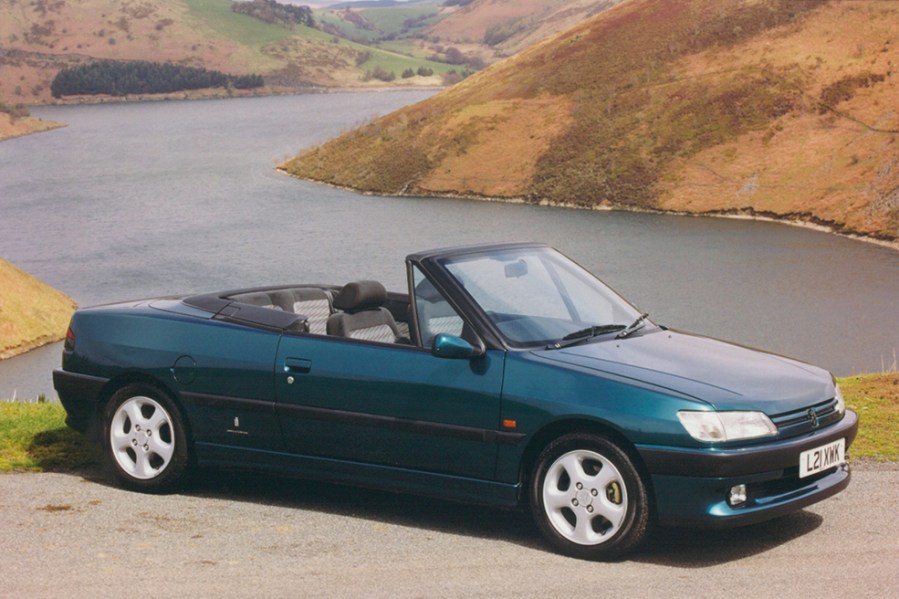
Audi Cabriolet
Saab and BMW had pretty much cornered the market for premium convertibles in the 1980s, and Audi didn’t think this was fair. So when it re-engineered its B3 80 Coupe into the B4 series, a convertible would be part of the plan. This would be based on the 80 Coupe, though the rear end would be redesigned to accommodate the lack of a roof. Launched in May 1991, it was the company’s first convertible design in over 30 years and came at first with a 2.3-litre five cylinder engine. The range later expanded to include 2-, 2.6- and 2.8-litre variants, while towards the end the 2-litre was replaced with the new 20-valve 1.8-litre unit from the A4. Production would continue until 2000, outlasting the 80 saloon by some five years.
Cabriolets today fetch anything from £2000-£5000, though the best value cars seem to sit around the £3000-3500 mark. We’d advocate the 2.6-litre V6 as a good compromise between power and economy, though the last 1.8s are perfectly good and the 2.3 entertaining in its oddball five-pot way. High-profile ownership by Princess Diana when new means that these cars became instant classics, and are still revered as such today.
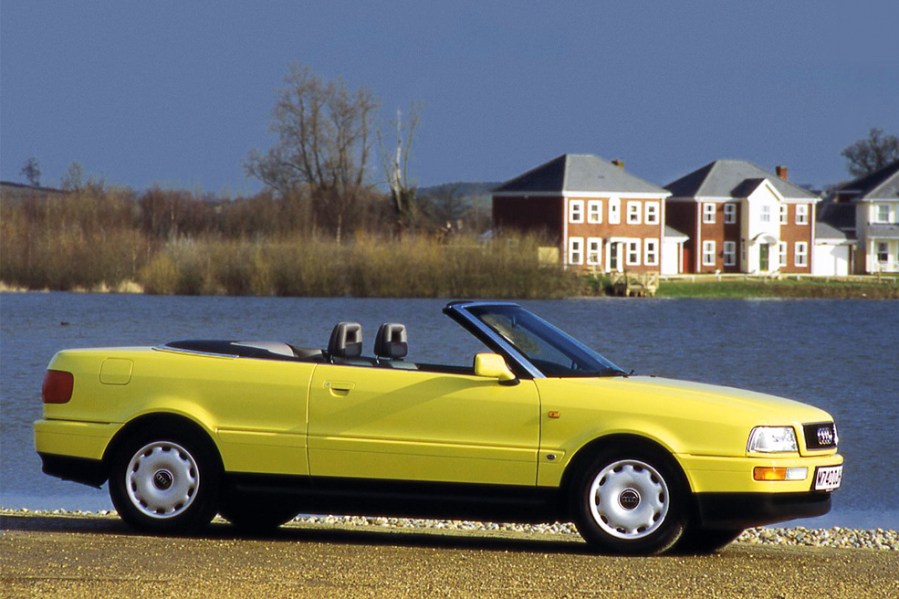
Rover Mini Cabriolet
Crayford created the first open-topped Minis in the 1960s, but it would take almost another 30 years for a manufacturer-approved version to be offered. Initially, a batch of 75 body-kitted cars all painted in Cherry Red were built by German firm LAMM Autohaus and sold via 12 select Rover dealerships. They were all snapped up within just a few weeks, prompting Rover to develop its own Mini Cabriolet – this time in conjunction with Karmann and Tickford.
Put on sale in 1993, it was remarkably similar to the LAMM version externally, but had smaller 12-inch Revolution wheels instead of 13-inchers and a better hood arrangement that was paired with wind-down rear windows. They were also plusher inside, with front seats specially developed by Cobra. It’s not known exactly how many were made, with some believing it to be as little as 300 before it went off sale in 1996.
The LAMM used a carb-fed 1275cc engine, but the later car used an injected unit. When new they sold for £12,250 and £11,995 respectively, which was more than twice the price of an entry-level Mini. Today, they’re expensive but exclusive – you’re looking at upwards of £15,000 for one in good condition. If you want a Mini convertible without the price tag, try one of the R52 MINI convertibles made from 2004-2008. Alternatively, if you want the Rover experience, try one of the Metro-based Rover 114 Cabriolets.
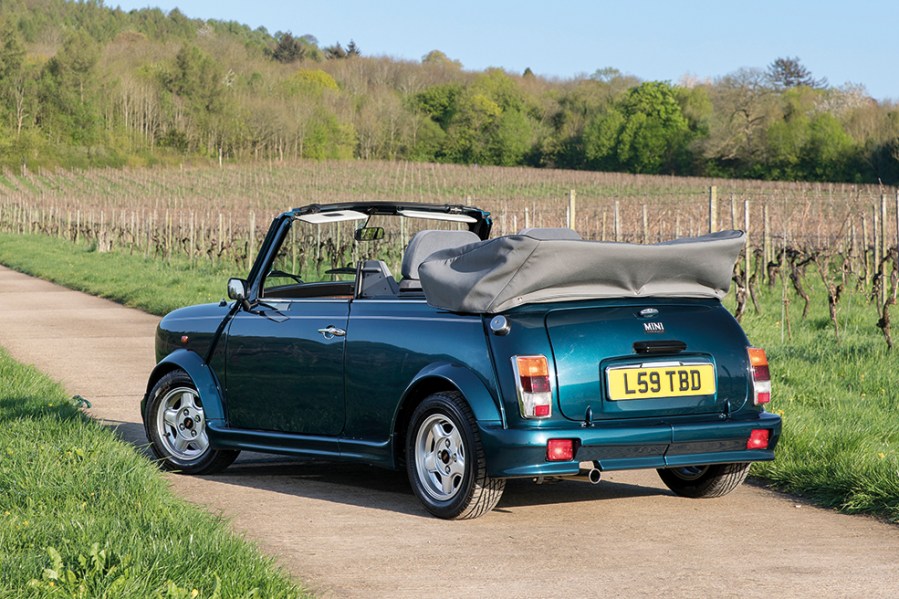
Morris Minor Tourer
Although a raft of late changes meant it wasn’t as radical as intended, the Morris Minor was still a giant leap forward for the economical family car market when it was launched in 1948. So, to reassure the buying public it was business as usual, the familiar Minor name from the brand’s past was adopted, as was the usual fare of two-door saloon and open-topped tourer body styles. The latter, complete with side screens in place of rear windows, would be revised for the Series 2 with fixed side glass for all passengers. As with all Minors, it would evolve from 918cc sidevalve power to an 803cc A-Series unit, which was increased to 948cc and then 1098cc by the end of production in 1969.
The most practical Minors are the 1098cc cars, though 948cc Minor 1000s are just as usable and many believe them to have sweeter gearboxes. The MM or Series 2 cars are more valuable and appeal to collectors, but are less drivable. Pay up to around £10,000 for a nice Minor 1000 Tourer with either engine, with the best commanding £15,000 and above. Many Minor saloons have been concerted into Tourers, and these are typically worth around 10 per cent less than a factory car.
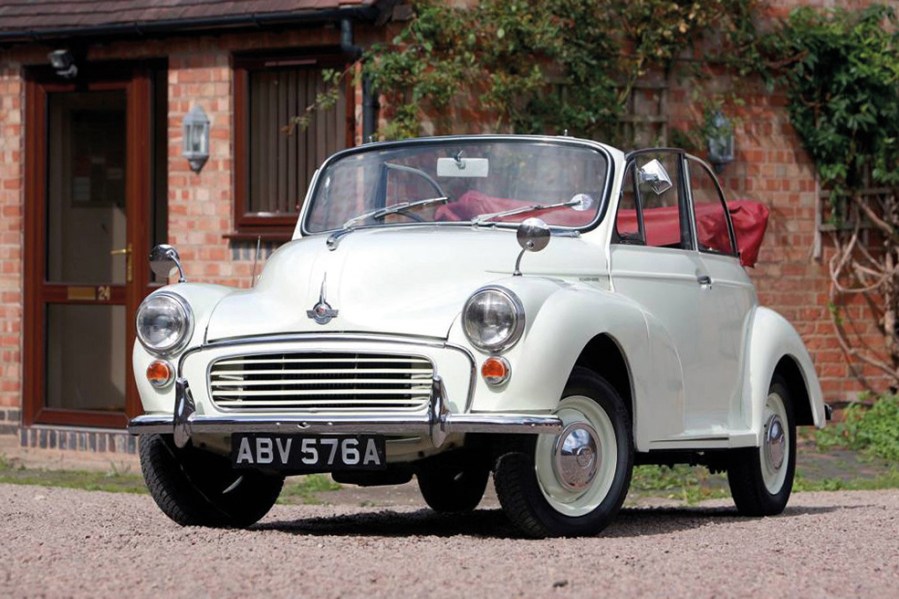
Triumph Herald Convertible
While Standard-Triumph hadn’t originally envisaged a convertible Herald – and certainly hadn’t created a convertible variant of its predecessor, the Standard Eight, it seemed like an obvious idea once the recipe for the Herald had been set in stone. After all, the car had been designed to be built in sections in order to account for the lack of a production facility with space to create complete shells.
It was inevitable that the owners of saloon and coupe models would simply unbolt the roof for a little al fresco summer fun, and by offering a factory variant with a well-engineered hood as a budget alternative to a Hillman Super Minx, Triumph found itself in a very healthy market position. The car appealed to those a little too well-heeled for a Minor, as well as those who found the latter old hat by the 1960s. The Triumph’s Thunderbird-esque looks gave it class beyond its price tag.
Today, Herald convertibles are desirable, and the best value are the best to own – the 13/60 models. Enthusiasts prefer the cute early cars to the snarly 13/60 but this means there are bargains aplenty, and you should only need around £7000 to get hold of something really nice. Early 948 examples, meanwhile, can command up to £10,000.
